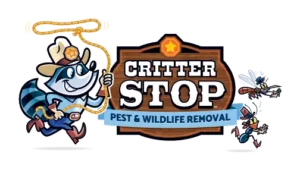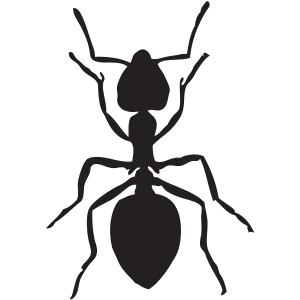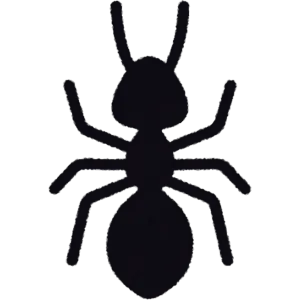Ants in Bedroom: How to Get Rid of Them Quickly and Safely
Ants in the bedroom can be a frustrating and bothersome problem for homeowners. Ants can masterfully infiltrate homes and find…

Meet the Experts
Our licensed wildlife and pest specialists combine years of hands-on experience with rigorous training to solve even the toughest infestations.




If critters or pests come back, so do we, at no extra charge.
1,000+ five-star reviews reflect our commitment to quality and trust.
We’ve helped more than 15,000 customers across Texas, Oklahoma, and South Carolina.
Free inspections, upfront pricing, extended availability, and responsive communication.
Fast scheduling and timely service when you need it most.
Safe, ethical removal practices that protect both your family and local wildlife.
We don’t just remove pests. We seal, repair, and restore to prevent re-entry.
Family owned and operated, giving back where we live and work.
Peace of mind knowing you’re fully protected.
We start with a complimentary consultation to understand your pest concerns and evaluate your property needs.
Our experts design a treatment plan tailored to your home, using safe and effective solutions that protect your family and pets.
If pests come back between scheduled visits, so do we. At no extra cost.
rosalie clause
Southlake
⭐⭐⭐⭐⭐
They do a great job we would use them again. EXCELLENT. 5. STAR
Raymond Alletto
Southlake
⭐⭐⭐⭐⭐
Thought I needed traps for skunk problem -- thanks to Philip and Dustin, they first did a survey of the area, and discovered the source of the problem (a dead skunk in the landscaping) and removed it! Please use these guys -- family owned business and v
Priya Paul
Southlake
⭐⭐⭐⭐⭐
From start to finish Critter Stop was very efficient in helping us with our wildlife issue and restoring our attic to a brand new one. We choose the full service - exclusion, trapping for any wildlife, removal and blow in of new insulation. Adrian and cr
Peter Huon
Southlake
⭐⭐⭐⭐⭐
I used Critter Stop due to squirrels and rodents in my attic. The work is still in its sealing phase and the work they have done so far has been great. Raphael came out today for trap checks and noticed new holes that were immediately patched up. The serv
Paula Masters
Southlake
⭐⭐⭐⭐⭐
Amazing service and loved that they made sure to not only protect my home, but to protect all the critters. They do their best to make sure if there are any critters in your attic, that they get out before they seal up the entry points. That was super imp
Paula Channell
Southlake
⭐⭐⭐⭐⭐
Just had Nicholas and Cory here to check traps and gaps and they did an excellent job. Explained what they did, how they did it, where and why they did it. They waited out the rain to get the work totally finished. Very polite, courteous guys. I can high
Michel Fusella
Southlake
⭐⭐⭐⭐⭐
Nicholas was very pleasant and easy to talk to, answering all out questions. The staff was very courteous and neat. We got imediate results and they followed up as promised. We recommend Critter Stop to anyone who needs this service.
Melvin Sanders
Southlake
⭐⭐⭐⭐⭐
Called Critter Stop to help remove raccoon who was attempting to make a home in my attic. After reviewing my attic and the entry point Chisam discussed with me a plan to install a one way trap to let the critter out. Once the critter was out the entry poi
Mark Szkudlarek
Southlake
⭐⭐⭐⭐⭐
Phillip is the best�friendly, courteous, and brilliant. He was our hero after discovering the source of a smell overtaking the laundry room after the gas company and our plumber were unsuccessful. .
Lindsey Hurt
Southlake
⭐⭐⭐⭐⭐
The team that came to my house included Philip, Dustin and Drew. They did a great job - acted with care and professionalism, and found several entry points that another company had completely missed.
Kelly Hastings
Southlake
⭐⭐⭐⭐⭐
Critter Stop is a lifesaver! Efficient, friendly, and so helpful!
Kathi Couch
Southlake
⭐⭐⭐⭐⭐
What a great, professional group to work with! Unfortunately our critter escaped , but we will use them again and refer everyone to use this company� for all of your � critter needs�.
greg bowdish
Southlake
⭐⭐⭐⭐⭐
Extremely professional, thorough approach bundled with thoughtful, detailed explanations of the problem and eventual solution. Best in class communication during and after our work was done. Highly recommended!
Denise Carino
Southlake
⭐⭐⭐⭐⭐
Absolute first class service from this company, went above and beyond to help with a very problematic situation. Sought the help of 3 different companies and this one by far had the most experience and thus solved our issue - Highly recommend!
Deepikamadan Chandika
Southlake
⭐⭐⭐⭐⭐
Phillip from CritterStop did great job. He is very thorough, fast and rechecked all the work. Service and communication is really good.
David Martinez
Southlake
⭐⭐⭐⭐⭐
Exceptional Rodent-Proofing Service.!! We are completely satisfied with the outstanding service provided. They sealing out our entire attic and roof vent to prevent rodents from entering our home. Mr. Christian, came out to meticulously recheck all the a
Brian Earle
Southlake
⭐⭐⭐⭐⭐
Christian, Aaron H, and Aaron M were great to work with. They arrived on time and worked steadily until the job was completed. They were courteous and answered all of my questions. I have no complaints.
rosalie clause
Southlake
⭐⭐⭐⭐⭐
They do a great job we would use them again. EXCELLENT. 5. STAR
Raymond Alletto
Southlake
⭐⭐⭐⭐⭐
Thought I needed traps for skunk problem -- thanks to Philip and Dustin, they first did a survey of the area, and discovered the source of the problem (a dead skunk in the landscaping) and removed it! Please use these guys -- family owned business and v
Priya Paul
Southlake
⭐⭐⭐⭐⭐
From start to finish Critter Stop was very efficient in helping us with our wildlife issue and restoring our attic to a brand new one. We choose the full service - exclusion, trapping for any wildlife, removal and blow in of new insulation. Adrian and cr
Peter Huon
Southlake
⭐⭐⭐⭐⭐
I used Critter Stop due to squirrels and rodents in my attic. The work is still in its sealing phase and the work they have done so far has been great. Raphael came out today for trap checks and noticed new holes that were immediately patched up. The serv
Paula Masters
Southlake
⭐⭐⭐⭐⭐
Amazing service and loved that they made sure to not only protect my home, but to protect all the critters. They do their best to make sure if there are any critters in your attic, that they get out before they seal up the entry points. That was super imp
Paula Channell
Southlake
⭐⭐⭐⭐⭐
Just had Nicholas and Cory here to check traps and gaps and they did an excellent job. Explained what they did, how they did it, where and why they did it. They waited out the rain to get the work totally finished. Very polite, courteous guys. I can high
Michel Fusella
Southlake
⭐⭐⭐⭐⭐
Nicholas was very pleasant and easy to talk to, answering all out questions. The staff was very courteous and neat. We got imediate results and they followed up as promised. We recommend Critter Stop to anyone who needs this service.
Melvin Sanders
Southlake
⭐⭐⭐⭐⭐
Called Critter Stop to help remove raccoon who was attempting to make a home in my attic. After reviewing my attic and the entry point Chisam discussed with me a plan to install a one way trap to let the critter out. Once the critter was out the entry poi
Mark Szkudlarek
Southlake
⭐⭐⭐⭐⭐
Phillip is the best�friendly, courteous, and brilliant. He was our hero after discovering the source of a smell overtaking the laundry room after the gas company and our plumber were unsuccessful. .
Lindsey Hurt
Southlake
⭐⭐⭐⭐⭐
The team that came to my house included Philip, Dustin and Drew. They did a great job - acted with care and professionalism, and found several entry points that another company had completely missed.
Kelly Hastings
Southlake
⭐⭐⭐⭐⭐
Critter Stop is a lifesaver! Efficient, friendly, and so helpful!
Kathi Couch
Southlake
⭐⭐⭐⭐⭐
What a great, professional group to work with! Unfortunately our critter escaped , but we will use them again and refer everyone to use this company� for all of your � critter needs�.
greg bowdish
Southlake
⭐⭐⭐⭐⭐
Extremely professional, thorough approach bundled with thoughtful, detailed explanations of the problem and eventual solution. Best in class communication during and after our work was done. Highly recommended!
Denise Carino
Southlake
⭐⭐⭐⭐⭐
Absolute first class service from this company, went above and beyond to help with a very problematic situation. Sought the help of 3 different companies and this one by far had the most experience and thus solved our issue - Highly recommend!
Deepikamadan Chandika
Southlake
⭐⭐⭐⭐⭐
Phillip from CritterStop did great job. He is very thorough, fast and rechecked all the work. Service and communication is really good.
David Martinez
Southlake
⭐⭐⭐⭐⭐
Exceptional Rodent-Proofing Service.!! We are completely satisfied with the outstanding service provided. They sealing out our entire attic and roof vent to prevent rodents from entering our home. Mr. Christian, came out to meticulously recheck all the a
Brian Earle
Southlake
⭐⭐⭐⭐⭐
Christian, Aaron H, and Aaron M were great to work with. They arrived on time and worked steadily until the job was completed. They were courteous and answered all of my questions. I have no complaints.
rosalie clause
Southlake
⭐⭐⭐⭐⭐
They do a great job we would use them again. EXCELLENT. 5. STAR
Raymond Alletto
Southlake
⭐⭐⭐⭐⭐
Thought I needed traps for skunk problem -- thanks to Philip and Dustin, they first did a survey of the area, and discovered the source of the problem (a dead skunk in the landscaping) and removed it! Please use these guys -- family owned business and v
Priya Paul
Southlake
⭐⭐⭐⭐⭐
From start to finish Critter Stop was very efficient in helping us with our wildlife issue and restoring our attic to a brand new one. We choose the full service - exclusion, trapping for any wildlife, removal and blow in of new insulation. Adrian and cr
Peter Huon
Southlake
⭐⭐⭐⭐⭐
I used Critter Stop due to squirrels and rodents in my attic. The work is still in its sealing phase and the work they have done so far has been great. Raphael came out today for trap checks and noticed new holes that were immediately patched up. The serv
Paula Masters
Southlake
⭐⭐⭐⭐⭐
Amazing service and loved that they made sure to not only protect my home, but to protect all the critters. They do their best to make sure if there are any critters in your attic, that they get out before they seal up the entry points. That was super imp
Paula Channell
Southlake
⭐⭐⭐⭐⭐
Just had Nicholas and Cory here to check traps and gaps and they did an excellent job. Explained what they did, how they did it, where and why they did it. They waited out the rain to get the work totally finished. Very polite, courteous guys. I can high
Michel Fusella
Southlake
⭐⭐⭐⭐⭐
Nicholas was very pleasant and easy to talk to, answering all out questions. The staff was very courteous and neat. We got imediate results and they followed up as promised. We recommend Critter Stop to anyone who needs this service.
Melvin Sanders
Southlake
⭐⭐⭐⭐⭐
Called Critter Stop to help remove raccoon who was attempting to make a home in my attic. After reviewing my attic and the entry point Chisam discussed with me a plan to install a one way trap to let the critter out. Once the critter was out the entry poi
Mark Szkudlarek
Southlake
⭐⭐⭐⭐⭐
Phillip is the best�friendly, courteous, and brilliant. He was our hero after discovering the source of a smell overtaking the laundry room after the gas company and our plumber were unsuccessful. .
Lindsey Hurt
Southlake
⭐⭐⭐⭐⭐
The team that came to my house included Philip, Dustin and Drew. They did a great job - acted with care and professionalism, and found several entry points that another company had completely missed.
Kelly Hastings
Southlake
⭐⭐⭐⭐⭐
Critter Stop is a lifesaver! Efficient, friendly, and so helpful!
Kathi Couch
Southlake
⭐⭐⭐⭐⭐
What a great, professional group to work with! Unfortunately our critter escaped , but we will use them again and refer everyone to use this company� for all of your � critter needs�.
greg bowdish
Southlake
⭐⭐⭐⭐⭐
Extremely professional, thorough approach bundled with thoughtful, detailed explanations of the problem and eventual solution. Best in class communication during and after our work was done. Highly recommended!
Denise Carino
Southlake
⭐⭐⭐⭐⭐
Absolute first class service from this company, went above and beyond to help with a very problematic situation. Sought the help of 3 different companies and this one by far had the most experience and thus solved our issue - Highly recommend!
Deepikamadan Chandika
Southlake
⭐⭐⭐⭐⭐
Phillip from CritterStop did great job. He is very thorough, fast and rechecked all the work. Service and communication is really good.
David Martinez
Southlake
⭐⭐⭐⭐⭐
Exceptional Rodent-Proofing Service.!! We are completely satisfied with the outstanding service provided. They sealing out our entire attic and roof vent to prevent rodents from entering our home. Mr. Christian, came out to meticulously recheck all the a
Brian Earle
Southlake
⭐⭐⭐⭐⭐
Christian, Aaron H, and Aaron M were great to work with. They arrived on time and worked steadily until the job was completed. They were courteous and answered all of my questions. I have no complaints.
rosalie clause
Southlake
⭐⭐⭐⭐⭐
They do a great job we would use them again. EXCELLENT. 5. STAR
Raymond Alletto
Southlake
⭐⭐⭐⭐⭐
Thought I needed traps for skunk problem -- thanks to Philip and Dustin, they first did a survey of the area, and discovered the source of the problem (a dead skunk in the landscaping) and removed it! Please use these guys -- family owned business and v
Priya Paul
Southlake
⭐⭐⭐⭐⭐
From start to finish Critter Stop was very efficient in helping us with our wildlife issue and restoring our attic to a brand new one. We choose the full service - exclusion, trapping for any wildlife, removal and blow in of new insulation. Adrian and cr
Peter Huon
Southlake
⭐⭐⭐⭐⭐
I used Critter Stop due to squirrels and rodents in my attic. The work is still in its sealing phase and the work they have done so far has been great. Raphael came out today for trap checks and noticed new holes that were immediately patched up. The serv
Paula Masters
Southlake
⭐⭐⭐⭐⭐
Amazing service and loved that they made sure to not only protect my home, but to protect all the critters. They do their best to make sure if there are any critters in your attic, that they get out before they seal up the entry points. That was super imp
Paula Channell
Southlake
⭐⭐⭐⭐⭐
Just had Nicholas and Cory here to check traps and gaps and they did an excellent job. Explained what they did, how they did it, where and why they did it. They waited out the rain to get the work totally finished. Very polite, courteous guys. I can high
Michel Fusella
Southlake
⭐⭐⭐⭐⭐
Nicholas was very pleasant and easy to talk to, answering all out questions. The staff was very courteous and neat. We got imediate results and they followed up as promised. We recommend Critter Stop to anyone who needs this service.
Melvin Sanders
Southlake
⭐⭐⭐⭐⭐
Called Critter Stop to help remove raccoon who was attempting to make a home in my attic. After reviewing my attic and the entry point Chisam discussed with me a plan to install a one way trap to let the critter out. Once the critter was out the entry poi
Mark Szkudlarek
Southlake
⭐⭐⭐⭐⭐
Phillip is the best�friendly, courteous, and brilliant. He was our hero after discovering the source of a smell overtaking the laundry room after the gas company and our plumber were unsuccessful. .
Lindsey Hurt
Southlake
⭐⭐⭐⭐⭐
The team that came to my house included Philip, Dustin and Drew. They did a great job - acted with care and professionalism, and found several entry points that another company had completely missed.
Kelly Hastings
Southlake
⭐⭐⭐⭐⭐
Critter Stop is a lifesaver! Efficient, friendly, and so helpful!
Kathi Couch
Southlake
⭐⭐⭐⭐⭐
What a great, professional group to work with! Unfortunately our critter escaped , but we will use them again and refer everyone to use this company� for all of your � critter needs�.
greg bowdish
Southlake
⭐⭐⭐⭐⭐
Extremely professional, thorough approach bundled with thoughtful, detailed explanations of the problem and eventual solution. Best in class communication during and after our work was done. Highly recommended!
Denise Carino
Southlake
⭐⭐⭐⭐⭐
Absolute first class service from this company, went above and beyond to help with a very problematic situation. Sought the help of 3 different companies and this one by far had the most experience and thus solved our issue - Highly recommend!
Deepikamadan Chandika
Southlake
⭐⭐⭐⭐⭐
Phillip from CritterStop did great job. He is very thorough, fast and rechecked all the work. Service and communication is really good.
David Martinez
Southlake
⭐⭐⭐⭐⭐
Exceptional Rodent-Proofing Service.!! We are completely satisfied with the outstanding service provided. They sealing out our entire attic and roof vent to prevent rodents from entering our home. Mr. Christian, came out to meticulously recheck all the a
Brian Earle
Southlake
⭐⭐⭐⭐⭐
Christian, Aaron H, and Aaron M were great to work with. They arrived on time and worked steadily until the job was completed. They were courteous and answered all of my questions. I have no complaints.
Accreditations & Memberships
From national certifications to local chamber memberships, homeowners in Mckinney and across DFW trust Critter Stop to do the job right.










Pests are more than bothersome. They also create risks to your health, your property, and in the commercial environment, your credibility. McKinney pest control alleviates some common risks such as:
A few years ago, one such McKinney family heard scratching noises emanating from their attic. They dismissed it as a small squirrel problem. On inspection, they found it to be a group of rodents that had chewed through wires and created a serious fire hazard. Professional intervention not only eradicated the pests but prevented a potential harmful aftermath. This is one among many real-life cases that highlight why professional McKinney pest control is important.
Early action saves money and prevents larger infestations. Business and homeowners in McKinney have to be on guard for:
If you notice any of these symptoms, it is best to call a professional service immediately.
At Critter Stop, we offer comprehensive McKinney pest control services tailored to the unique needs of local homes and businesses. Our treatments cover everything from termite protection that safeguards structural integrity, to humane rodent exclusion methods that remove mice and rats while preventing re-entry.
We provide seasonal mosquito control to reduce infestations, as well as effective cockroach and German cockroach extermination for one of the most stubborn household pests. Our team also delivers targeted ant and fire ant treatments, along with safe solutions for spiders, scorpions, and silverfish.
For more severe problems, we offer bed bug removal to restore comfort and confidence, and wildlife control that humanely relocates raccoons, squirrels, and other intruders. To ensure long-term results, our preventive plans provide year-round coverage. Every service is designed with safety in mind, using eco-friendly methods that are effective yet harmless to your family and pets.
Some homeowners turn to DIY sprays or traps, but these options usually provide only short-term relief. Professional McKinney pest control offers lasting protection through local knowledge of the city’s climate and the pests most common in the area, advanced treatments not available on store shelves, and customized solutions tailored to each property.
Reliable service ensures that from the first inspection to follow-up visits, problems are fully resolved. One McKinney business owner shared that after multiple failed attempts to handle an ant problem on their own, professional extermination finally eliminated the infestation and, more importantly, protected their reputation with customers..
At Critter Stop, experience combines time-tested techniques to deliver results. If you're troubled by termites, rodents, mosquitoes, or other unwanted pests, our staff will help. Protect your property, your health, and your peace of mind with trusted McKinney pest control services.
Call us now at (214) 238-9502 to schedule your free inspection and discover how we can protect your home or business throughout the year.

Ants in the bedroom can be a frustrating and bothersome problem for homeowners. Ants can masterfully infiltrate homes and find…

Spiders are often misunderstood creatures, especially when it comes to their biology. If you've wondered, "Are spiders cold blooded?" the…

Mosquitoes can make any outdoor experience frustrating. To effectively get rid of them, standing water must be eliminated, repellent plants…

Termites can potentially cause major property damage and quickly become a homeowner's worst nightmare if not treated. To ensure that…




















